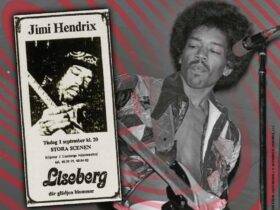Introduction
The Rolling Stones are musical titans, their legendary reputation engraved in rock history. However, underneath their renowned image is a tapestry weaved with myths and prejudices. Join me as we deconstruct The Rolling Stones. We’ll dive into the rock and roll myths surrounding this band for decades.
Myth #1: The Rolling Stones Are Only Rock and Roll
The Rolling Stones’ musical environment is a rich tapestry. It extends far beyond rock & roll. Their musical inspirations range from blues and jazz to country and even psychedelia. This isn’t just a rock band; it’s a sonic trip across music’s various landscapes.
Let’s look at the musical influences that inspired The Rolling Stones’ sound. Their repertoire is a melting pot of musical genres, from Muddy Waters’ bluesy resonance to Chuck Berry’s rhythmic charm. Untangling these inspirations demonstrates the band’s dedication to musical development.
The Rolling Stones didn’t merely dabble in diverse genres; they jumped in headfirst. Albums like “Beggars Banquet” and “Exile on Main St.” witness their bold experimentation. Blues, country, and even reggae elements are woven throughout their rock tapestry, demonstrating a flexibility that defies classification.
Myth #2: Mick Jagger and Keith Richards Always Got Along
Mick Jagger and Keith Richards’ relationship is as complex as the chords they play. Their onstage chemistry is evident. However, their relationship is a rollercoaster of friendship and struggle.
The electrifying partnership of Jagger and Richards is at the heart of The Rolling Stones. It’s more than just a cooperation; it’s a creative battle. Their dynamic exemplifies the yin and yang of songwriting. Opposing energies produce beautiful melodies.
Consider the dimly lit studio, the subtle buzz of amplifiers, and the odd ego clash. Behind every number-one hit is a story of teamwork and rivalry. Anecdotes of late-night composition sessions and chord conflicts clearly show the nuanced dynamics between these two musical titans.
As we peel back the preconceptions, it becomes clear that The Rolling Stones are more than just rock and roll caricatures. Musical diversity and the delicate dance of creative partnerships have distinguished their journey. Stay tuned for the next chapter as we disentangle reality from fiction in The Rolling Stones’ incredible narrative.
Myth #3: The Rolling Stones Lived a Glamorous, Trouble-Free Life
With their swagger and charisma, the Rolling Stones personify the carefree rockstar lifestyle. However, as we peel back the layers of flash and glam, we discover a new story marked by problems, scandals, and legal entanglements.
Behind the scenes, the Stones’ voyage was not all roses and champagne. Let us shatter the myth of trouble-free living. Like everyone else, the Rolling Stones faced numerous obstacles on the road to rock glory. Their narrative exemplifies the tenacity required to leave a lasting musical legacy. They faced financial difficulties and artistic issues.
In this chapter of myth-busting, we look at The Rolling Stones’ difficulties. The band worked hard to become popular. They faced music restrictions and legal disputes over song rights. Controversies, such as the iconic Altamont Free Concert, add levels of complication to their story. It’s time to recognize the Stones as resilient artists. They navigate the stormy currents of the music industry, not as indestructible rock gods.
Myth #4: The Rolling Stones Were Always a Stable Lineup
A closer examination of The Rolling Stones’ history reveals a dynamic in their music and roster. The band’s stability was only sometimes continuous. It varied throughout time due to member changes and partnerships.
The roster of the Stones was not set in stone. Change was an inherent aspect of their path, from the early days with Brian Jones to the departure of Mick Taylor. These changes were more than logistical; they influenced the band’s sound and style. Exploring these transitions reveals the adaptability essential to The Rolling Stones’ long-term relevance.
Every addition or departure gave the Stones’ music a distinct flavor. Investigating the effect of lineup changes on their sound is like studying the anatomy of a musical organism. The band’s ability to grow, spurred by the inventiveness of new members, contributed to its longevity and popularity.
Myth #5: The Rolling Stones’ Success Was Instantaneous
Rock fans worldwide remember The Rolling Stones as rock superstars, but they didn’t become one overnight. Let us look into their hardships and obstacles to international fame.
Small venues, meager earnings, and an unwavering enthusiasm for music paved the way to stardom. Like many other budding musicians, the Stones struggled with obscurity and financial insecurity. Documenting their early challenges sheds light on the tenacity that propelled them to the top of the music world.
Unlike the idea of quick stardom, The Rolling Stones’ rise was slow. They carved their place in music history by weaving through the British Invasion. They also won the American market. Examining their journey allows us to understand the patience and perseverance that fueled their rise.
Myth #6: The Rolling Stones Only Appeal to Older Generations
The allure of the Rolling Stones isn’t limited to a bygone age; it transcends generations. Let’s examine the band’s ageless charm. It transcends age barriers. They also have a profound influence on contemporary music.
While many iconic rock bands are bound by nostalgia, The Rolling Stones defy the standard. Their music has become a bridge between generations. It attracts people who grew up in the 1960s and 1970s and today’s youth. We’ll unpick the strands of their aural fabric that connect with listeners of all ages.
To comprehend The Rolling Stones’ influence on contemporary music, we must look beyond their discography’s chronological confines. Today’s performers, ranging from indie rock to alternative pop, may incorporate their impact into their music. We will dissect this influence, revealing the band’s lasting stamp on the expanding world of modern music.
Myth #7: The Rolling Stones Lyrics Are Superficial
Beyond the addictive riffs and Mick Jagger’s captivating swagger, the band’s rockstar image obscures a lyrical depth. This section will delve into the complexities of The Rolling Stones’ songwriting. We’ll reveal the profound social and political issues weaved within their lyrics.
It’s time to bust the idea that The Rolling Stones lyrics are nothing more than rock and roll poetry. We’ll look at their storytelling abilities. “Angie” has introspective reflections, while “Gimme Shelter” includes sociopolitical comments.” Each phrase is a brushstroke on the canvas of human existence, giving meaning layers to the musical tale.
The Rolling Stones were fearless in addressing social issues. Their songs are full of revolt, love, and criticism of the human condition. We’ll peel back the layers of social consciousness hidden in their songs. This will reveal a side of the band that is generally overlooked.
Myth #8: The Rolling Stones Are Past Their Prime
As we work through the myths, we come across the idea that The Rolling Stones are relics of the past. Their former accomplishments eclipse them. This section deconstructs that notion. It offers insight into the band’s recent achievements and ongoing influence on the music business.
The Rolling Stones don’t rest on their laurels. They continue to dominate venues worldwide, producing new music and mesmerizing audiences. We’ll look at their most recent endeavors. They have critically praised albums and sold-out tours. This shows their creative flame is still burning brightly.
The Stones’ influence isn’t just a sentimental echo; it’s a driving force creating the modern music scene. The Rolling Stones continue to shape the industry’s landscape, whether they partner with emerging artists or receive recognition for their long-term achievements.
FAQs
Q1: What inspired the creation of “The Rolling Stones: Separating Fact from Fiction” blog?
The site debunks myths about The Rolling Stones and offers a more nuanced perspective on their journey. It seeks to distinguish fact from myth. It gives readers a complete picture of the band’s diverse heritage.
Q2: How does the blog address the misconception that The Rolling Stones only appeal to older generations?
We investigate the band’s enduring appeal to various age groups. We demonstrate how their music crosses generational boundaries. The blog examines The Rolling Stones’ influence on modern music. It demonstrates their continuous importance beyond their inception.
Q3: What insights does the blog offer into The Rolling Stones’ songwriting, dispelling the myth that their lyrics are superficial?
Beyond the rockstar image, the blog dives into the depth and complexity of The Rolling Stones’ compositions. It investigates the social and political issues of their lyrics. It uncovers profound narrative and criticism that goes unrecognized often.
Q4: How did The Rolling Stones always have a stable lineup?
The blog investigates The Rolling Stones’ lineup. It documents band member changes and partnerships. It also examines how these changes affected the band’s sound and success. This provides a complete perspective of their musical history.
Q5: What recent achievements and activities of The Rolling Stones are highlighted in the blog to dispel the myth that they are past their prime?
The site chronicles the band’s most recent accomplishments. These include critically praised albums and sold-out tours. It exemplifies The Rolling Stones’ continuous influence on the music industry. This shows that they are far from relics of the past. They continue to shape the present music scene.
Q6: Can I expect any future installments or related content?
Watch for future chapters that may delve deeper into facets of The Rolling Stones’ journey. They might also explore their effect on diverse genres. They could also study any noteworthy advancements in their ongoing legacy. Subscribe to our newsletter for updates on related material. Get insights into iconic musicians.
Conclusion
As we end our tour through the myths surrounding The Rolling Stones, it’s clear that their legacy is far more complex than the stories portray. We’ve peeled back layers to expose a band that isn’t bound by age or time but still shapes the musical narrative. The Rolling Stones’ long reputation exemplifies the ageless nature of outstanding musical craftsmanship.













Leave a Reply